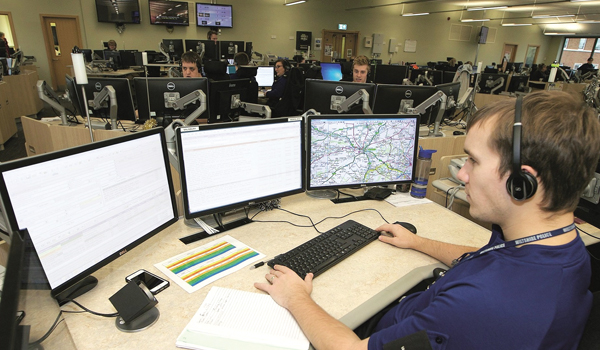‘Hybrid cloud’ sets new heights for data sharing
A multiple ‘hybrid’ cloud landscape using the best available capability could provide a seamless data-sharing environment for law enforcement.
“For a long time technology has allowed us the ability to share data across systems, however, typically people find excuses not to share data,” explained Mark Goossens, client director for Home Office and Police at IBM. “Cloud as an enabling technology gives us a rosy future.”
For example, the National Law Enforcement Data Programme – the bringing together of the Police National Computer (PNC) and Police National Database (PND) into a single cloud hosted solution – will change the way we work,” he said.
“Using the PNC data as an index for all of the PND data from all forces will mean that we will have one coherent view of intelligence across the UK,” added Mr Goossens.
“Next, this solution will exploit artificial intelligence (AI), to spot patterns in complex data sets that are just too complex for humans to digest.”
There are many specific AI capabilities being developed said Mr Goossens, ranging from automating the extraction of POLE (people, objects, locations and events) data from witness statements, to spotting all the young men in a video sporting a red baseball cap and facial hair.
“These will all be delivered by cloud, but not the same cloud,” he added.
“The modern police system will need to make these automated inquiries across the multiple ‘hybrid’ cloud landscape, to use the best capability to solve the specific problem. When somebody comes up with a better/cheaper facial recognition system, we just point the query at that cloud instead.”
Mr Goossens, who was commenting in a guest blog for techUK’s recent ‘Cloud Week’, said any organisation adopting cloud services should have an “open mind”.
“We’ve decided to use ‘XYZ Cloud’ for all our needs”, suggests laziness or ignorance,” he said. “Equally, [saying] ‘cloud is not secure enough for law enforcement’, misses the point.”
Mr Goossens said there are now a number of secure cloud offerings available to law enforcement, and it is sensible to use “a specific cloud for a specific purpose”.
“For example, ‘let’s keep all of our Office documents in the Microsoft cloud’ – given appropriate access management, this allows people from across law enforcement to securely share documents,” he added.
“However, this doesn’t mean that you’ve chosen your cloud for storing body-worn video (BWV) or crime intelligence, which are both quite different problems.”
Mr Goossens says for long-term storage of evidential BWV, for example, consideration needs to be taken on how cheaply video can be stored with decent performance; how cheap is it to keep safe with infrequent access; and how much it costs to move it to a new supplier.
“When comparing costs, remember, cloud includes everything – ensure that you compare this to your true in-house costs, which include hardware, network, security, datacentre, electricity and people,” he added.
“Historically, IT vendors did a good job of locking people in. Today, we live in an open standards world with defined ways for systems to talk to one another.”
Hybrid, multiple clouds plus in-house capabilities enable the sharing of data, said Mr Goossens.
“Because of the open nature of modern IT, it also doesn’t mean that we’ve increased complexity – just improved functionality and reduced cost,” he added.





